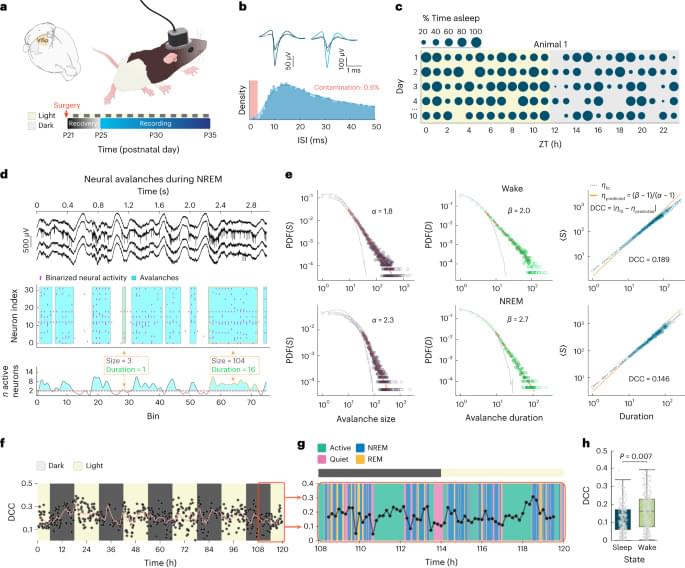Go to https://brilliant.org/IsaacArthur/ to get a 30-day free trial + the first 200 people will get 20% off their annual subscription.\
Reaching new worlds is a difficult task, but transplanting ecosystems and civilizations to them may be even harder.\
\
Pancosmorio Paper: https://www.frontiersin.org/articles/.…\
\
Visit our Website: http://www.isaacarthur.net\
Join Nebula: https://go.nebula.tv/isaacarthur\
Support us on Patreon: / isaacarthur \
Support us on Subscribestar: https://www.subscribestar.com/isaac-a…\
Facebook Group: / 1,583,992,725,237,264 \
Reddit: / isaacarthur \
Twitter: / isaac_a_arthur on Twitter and RT our future content.\
SFIA Discord Server: / discord \
\
Credits:\
The Fermi Paradox: Pancosmorio Theory\
Episode 428; January 4, 2024\
Produced, Written \& Narrated by: Isaac Arthur\
Editor: Briana Brownell\
\
Graphics:\
Jeremy Jozwik\
Ken York\
Mafic Studios\
\
Music Courtesy of:\
Epidemic Sound http://epidemicsound.com/creator
Get the latest international news and world events from around the world.

Horizontal gene transfer facilitates the molecular reverse-evolution of antibiotic sensitivity in experimental populations of H. pylori
The authors evolved antibiotic-resistant Helicobacter pylori in the absence of antibiotics and presence of DNA from antibiotic-sensitive strains. Horizontal gene transfer mediated the molecular reverse evolution of the antibiotic-resistance gene to the antibiotic-sensitive allele, and the authors used theoretical modelling to determine the evolutionary conditions that promote reverse evolution.


Metal-organic frameworks study unravels mechanism for capturing water from air
Researchers from the Helmholtz-Zentrum Dresden-Rossendorf and Dresden University of Technology have unraveled the water adsorption mechanism in certain microporous materials—so-called hierarchical metal-organic frameworks (MOFs)—while probing them on the atomic scale.
Discovered only about 25 years ago, their special properties quickly led to a reputation as “miracle materials”—which, as it turned out, can even harvest water from air. The researchers describe how the material achieves this in ACS Applied Materials & Interfaces.
“These very special materials are highly porous solids made of metals or metal-oxygen clusters which are connected in a modular way by pillars of organic chemicals. This 3D arrangement leads to networks of cavities reminiscent of the pores of a kitchen sponge. It is precisely these cavities that we are interested in,” says Dr. Ahmed Attallah of HZDR´s Institute of Radiation Physics.



Sleep restores an optimal computational regime in cortical networks
Unraveling the Enigma of Sleep: A Critical Exploration of Cortical network Dynamics.
Sleep has long been recognized as a fundamental physiological process, crucial for the well-being of both humans and animals.
Xu et al. show that waking progressively disrupts neural dynamics criticality in the visual cortex and that sleep restores it. Deviations from criticality predict future sleep/wake behavior better than prior behavior and slow-wave activity.

Is Radon linked to health condition other than lung cancer?
Radon, a naturally occurring radioactive gas produced when metals like uranium or radium break down in rocks and soil, is a known cause of lung cancer. Now new research has found exposure to high levels of this indoor air pollutant is associated with an increased risk of another condition in middle age to older female participants with ischemic stroke. The study is published in the January 3, 2024, online issue of Neurology, the medical journal of the American Academy of Neurology. Ischemic stroke is caused by a blockage of blood flow to the brain and is the most common type of stroke.
The condition, called clonal hematopoiesis of indeterminate potential (CHIP), develops when some hematopoietic stem cells, the building blocks for all blood cells, undergo genetic mutations as a person ages. Cells with such mutations replicate more quickly than cells without them. Previous research has shown people with CHIP may have a higher risk of blood cancers like leukemia and cardiovascular disease including stroke.
The study involved 10,799 female participants with an average age of 67. Approximately half of participants had a stroke or blood clots.
